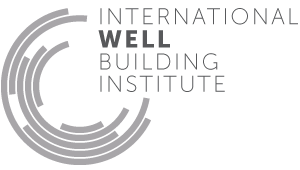WELL Building Standard®
We believe that buildings should be developed with people’s health and wellness at the center of design. The WELL Building Standard takes a holistic approach to health in the built environment addressing behavior, operations and design.
WELL is a performance-based system for measuring, certifying, and monitoring features of the built environment that impact human health and well-being, through air, water, nourishment, light, fitness, comfort and mind.
WELL is grounded in a body of medical research that explores the connection between the buildings where we spend more than 90 percent of our time, and the health and wellness impacts on us as occupants. WELL Certified™ spaces can help create a built environment that improves the nutrition, fitness, mood, sleep patterns and performance of its occupants.
Download the WELL Building Standard®
Concepts
WELL measures attributes of buildings that impact occupant health by looking at seven factors, or Concepts.
The Seven Concepts of the WELL Building Standard®
Air: Optimize and achieve indoor air quality. Strategies include removal of airborne contaminants, prevention and purification.
Water: Optimize water quality while promoting accessibility. Strategies include removal of contaminants through filtration and treatment, and strategic placement.
Nourishment: Encourage healthy eating habits by providing occupants with healthier food choices, behavioral cues, and knowledge about nutrient quality.
Light: Minimize disruption to the body’s circadian rhythm. Requirements for window performance and design, light output and lighting controls, and task-appropriate illumination levels are included to improve energy, mood and productivity.
Fitness: Utilize building design technologies and knowledge-based strategies to encourage physical activity. Requirements are designed to provide numerous opportunities for activity and exertion, enabling occupants to accommodate fitness regimens within their daily schedule.
Comfort: Create an indoor environment that is distraction-free, productive, and soothing. Solutions include design standards and recommendations, thermal and acoustic controllability, and policy implementation covering acoustic and thermal parameters that are known sources of discomfort.
Mind: Support mental and emotional health, providing the occupant with regular feedback and knowledge about their environment through design elements, relaxation spaces, and state-of-the-art technology.
Features
WELL is composed of over one hundred Features that are applied to each building project, and each WELL Feature is designed to address issues that impact the health, comfort, or knowledge of occupants.
Many WELL Features intended to improve health are supported by existing government standards or other standards-setting organizations. Some Features are intended to change behavior through education and corporate policy or culture, and provide information and support for making positive lifestyle choices.
Features can be:
- Performance-based standards: allow flexibility in how a project meets acceptable quantified thresholds.
- Descriptive standards: require that specific technology, design strategies, or protocols are implemented.
WELL Features are categorized as either Preconditions—necessary for baseline WELL Certification, or Optimizations—optional enhancements, which together determine the level of certification above baseline certification.
Project Typologies
The Features of WELL can be applied across many real estate sectors, and the current WELL v1 is optimized for commercial and institutional office buildings.
WELL is further organized into Project Typologies which take into account the specific set of considerations that are unique to a particular building type or phase of construction. For WELL v1, there are three project typologies:
New and Existing Buildings (formerly known as New Construction and Major Renovations Typology): This project typology applies to new and existing buildings and addresses the full scope of project design and construction as well as aspects of building operations.
New and Existing Interiors (formerly known as Tenant Improvement): This project typology applies to commercial interior projects in existing buildings. In WELL Core and Shell Compliant buildings, some WELL Features may already apply towards New and Existing Interiors certification—making certification easier.
Core and Shell: WELL Core and Shell is available for new core and shell developments or for multi-tenant buildings seeking to implement the basic conditions necessary to achieve WELL Certification. The core and shell typology addresses the building structure, window locations and glazing, building proportions, heating, cooling and ventilation system, as well as water quality as it is supplied to the building. This typology also encourages consideration of the site in relation to amenities and opportunities for wellness.
Pilot Programs
While the WELL Building Standard v1 is currently applicable to commercial and institutional office buildings, IWBI has developed pilot versions of the standard to test and refine how WELL can be applied to new building sectors. IWBI currently offers pilot programs for retail, multifamily residential, education, restaurant and commercial kitchen projects.
Participation in WELL pilot programs provides an opportunity for projects to engage at the cutting edge of the healthy building movement. IWBI’s goal is to integrate feedback and lessons learned from pilot projects and industry experts to help inform future versions of the WELL Building Standard.
Pilot projects may achieve Silver, Gold or Platinum pilot certification following the same method as WELL v1. The first step is to download the pilot standard (available as an addendum to WELL v1) and officially apply to the pilot program for your designated building sector through WELL Online. IWBI will contact you to learn more about your project, conduct an initial evaluation to ensure that it fits the specifications, and provide assistance throughout the pilot certification process.
Download the pilot standards. For inquiries about WELL pilot programs, please contact pilots@wellcertified.com.
RETAIL
Retail applies to locations where consumers can view and purchase merchandise onsite, and staff are employed to assist in the sale of products. The Retail pilot standard is applicable to both owner- and tenant-occupied projects, and to both those in stand-alone buildings and those integrated into larger structures.
MULTIFAMILY RESIDENTIAL
Multifamily Residential applies specifically to projects with at least five dwelling units in a single building with common structural elements. Projects that qualify include apartments, condominiums, townhouses, and other residential complexes within all market thresholds – affordable housing, market-rate, and luxury.
EDUCATION
Educational Facilities applies to projects where dedicated staff are employed for instructional purposes, and students may be of any age. Courses may cover any range of topics, and facilities may be typified by fully scheduled days, or distinct classes that students enroll in at will.
RESTAURANT
Restaurants applies to locations where a consumer purchases food and dines onsite, and includes indoor or outdoor seating. The establishment may include wait staff that tend to consumers, or be self-serve. The Restaurant pilot standard does not include take-out only establishments, nor establishments whose primary source of revenue derives from the sale of alcoholic beverages. Further, the Restaurant pilot standard only applies to dining spaces—it does not cover kitchens in which food is prepared (see Commercial Kitchen).
COMMERCIAL KITCHEN
Commercial Kitchens applies to locations where cooks prepare food for other building users. It is not applicable to office kitchenettes or home kitchens. In general, spaces subject to local health inspection are likely to use this Pilot Addendum. Commercial Kitchen is always paired with another standard, such as Restaurant or Education.



